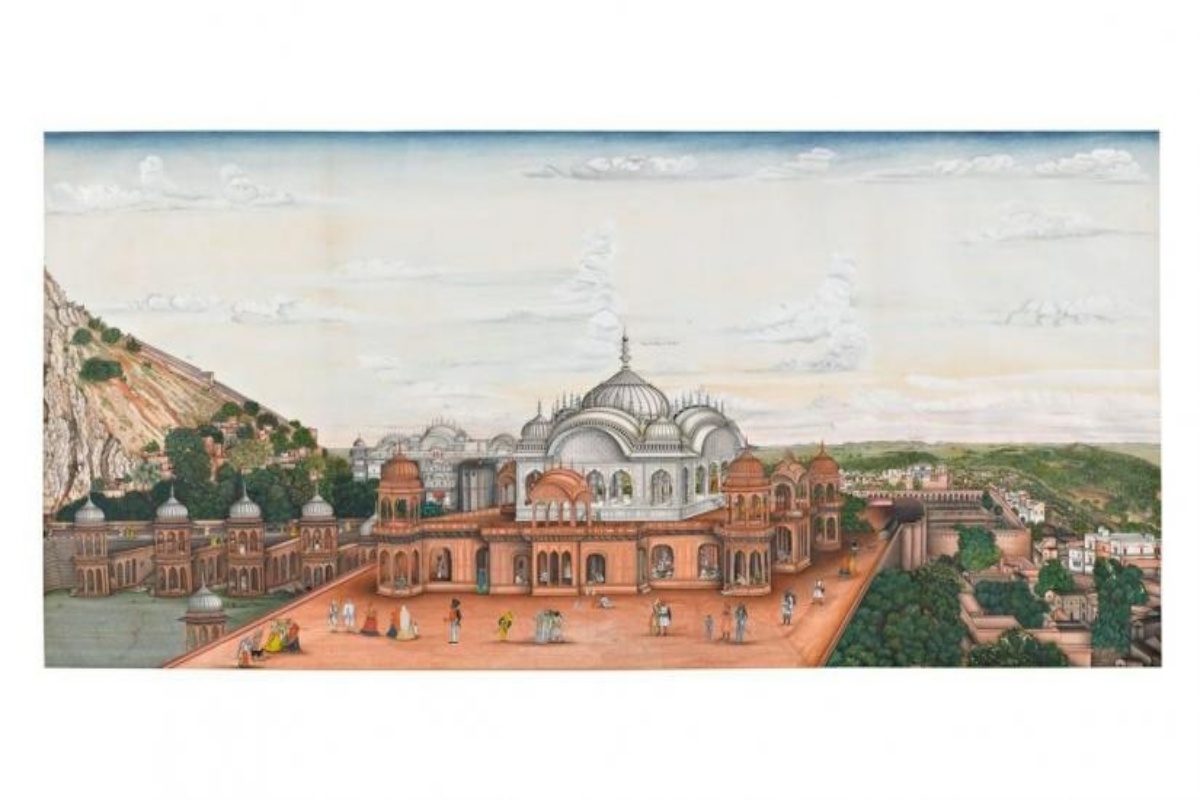An auction dedicated solely to Company School Paintings, the work of Indian master artists who were commissioned by East India Company officials in the 18th and 19th centuries, will take place at Sotheby’s on October 27.
Ranging in their subject matter from individual animal and human studies to complex architectural panoramas, together the remarkable corpus of paintings encapsulates on paper the rich fauna, flora and architecture of the Indian subcontinent.
Some of these late 1700s works have estimates starting from �200,000, which converts to over Rs 2 crores.
Advertisement
The works in the auction are being offered by the American collector and esteemed art dealer Carlton C. Rochell, Jr. In 2019 and 2020, The Wallace Collection presented ground-breaking exhibition ‘Forgotten Masters: Indian Painting for the East India Company’, curated by renowned writer and historian William Dalrymple, which brought to the fore the names of some of the finest Indian names working on paper during the late Mughal period.
Many of those same names – Shaykh Zayn al-Din, Ram Das, Bhawani Das and Ghulam Ali Khan – are represented in this ‘In an Indian Garden’ auction, with seven of the works having been loaned to the Wallace Collection exhibition. Most of the others have never been on public view and are emerging for the first time in decades, says the auction house.
“I first began to collect these lesser-known masterpieces over two decades ago simply for my personal enjoyment, my imagination having been captured by their ‘East meets West’ aesthetic. When they were painted, these works were the principal way in which India could be revealed to those in Great Britain, who otherwise could only hear stories about this sumptuous land. The meticulous ‘miniature’ style was scaled up to depict birds, animals and botanical studies with remarkable lifelike detail, with the results rivalling any Western artists who recorded natural history and travel. Many years on, as they are beginning to take their rightful place in world art, these pieces can now inspire a new generation of collectors who I hope will cherish them as I have,” said Carlton C. Rochell, Jr.
“This remarkable collection contains quite simply some of the great masterpieces of Indian painting, brought together by a collector with an incredibly fine eye. This is a unique opportunity to purchase some of the greatest masterpieces of a genre that is only now beginning to receive its full credit,” writes William Dalrymple, writer, historian and urator of ‘Forgotten Masters’ exhibition.
“These delightful paintings reflect a fascination and passion for India’s culture and history, from Lucknow to Calcutta to Delhi and Agra, and showcase a remarkable hybrid style merging Mughal and European elements. Both the patronage and the painters provide a great deal of interest to viewers, no more so than now, when this genre of painting is finally receiving the full attention it deserves. These works are the product of true collaboration – not grand portraits of the patrons themselves, but tableaux of everyday human activity, as well as meticulous studies of nature and vernacular architecture,” says Benedict Carter, Sotheby’s Head of Sale.
The ‘In An Indian Garden’ auction features many works from the most renowned series of Company School paintings, including albums commissioned by Sir Elijah and Lady Impey, the Fraser brothers, Viscount Valentia and Major General Claude Martin. The most famous is that of the Impey family, who created an enchanting menagerie of animals in their gardens in Calcutta and hired local artists to paint the surrounds, with more than half of their over 300-strong collection depicting birds.
The animals of the Company School are akin to portraits of individuals, replete with precision, vitality and characterisation. This was achieved through the use of living examples, many from the Impey zoo, in combination with the Mughal inheritance of perceptive portraiture, as first-class artists trained in micro-fine detailing began to use this skill not to paint miniatures of court scenes and processions but instead to capture birds and animals.
The upcoming auction offers immediately recognisable masterworks such as Bhawani Das’s Great Indian Fruit Bat, Shaykh Zayn al-Din’s Malabar Squirrel and Stork and the strikingly elegant Demoiselle Crane painted in Lucknow, says the auction house.
Advertisement











